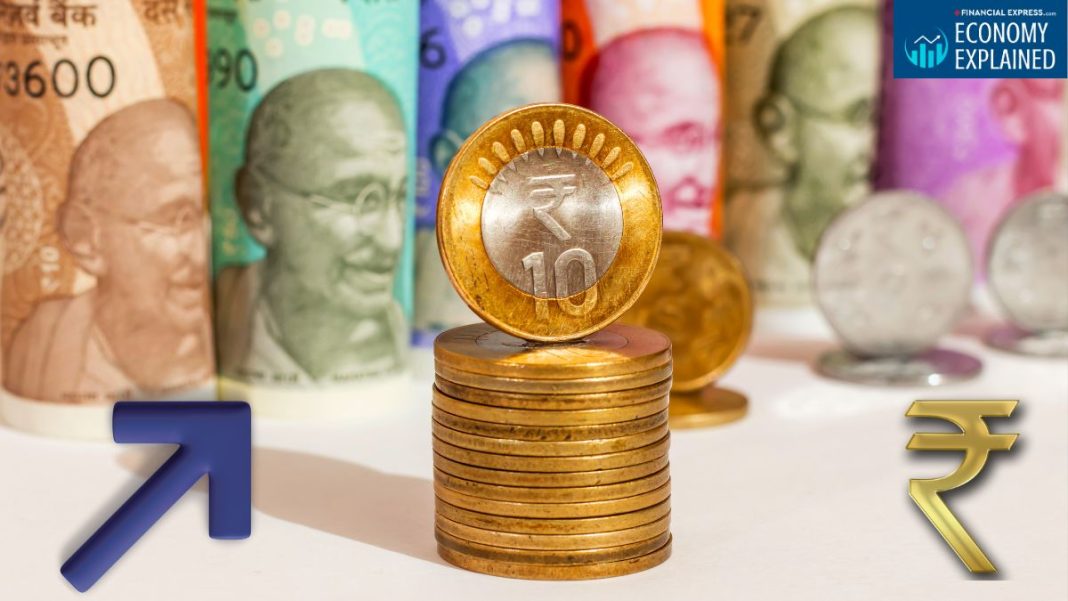Why the Rupee is Falling — And What It Means for You
Key Takeaways:
- Indian rupee declined 3.1% against USD in 2025 despite strong economic fundamentals
- Capital outflows, not economic weakness, are the primary driver
- RBI has $700 billion in reserves to manage volatility
- Rupee now appears undervalued, suggesting potential for stabilization
The Indian rupee has lost significant ground in 2025, falling 3.1% against the US dollar by October 28. This decline becomes more pronounced when compared to other major currencies – the rupee dropped 15% against the Euro, 9% against the British Pound, and 6% against the Japanese Yen.
Strong Economy, Weak Currency Paradox
India’s economic fundamentals remain robust despite the rupee’s decline. GDP grew 7.8% in the April-June quarter with full-year projections around 6.5%. Inflation stays comfortably below the RBI’s 4% target, while the current account deficit remains manageable at about 1% of GDP.
The country boasts impressive $700 billion in foreign exchange reserves, sufficient to cover 11 months of imports, coupled with modest external debt below 19% of GDP. These strong indicators confirm the rupee’s fall stems from external factors rather than domestic economic weakness.
Capital Outflows: The Real Story
The primary driver behind the rupee’s depreciation is a dramatic reduction in foreign capital inflows. Net capital inflow for 2025 stands at just $2.25 billion (0.1% of GDP), far below the typical 2-2.5% range.
Foreign direct investment has plummeted from $40-45 billion annually during FY20-22 to just $1 billion in FY25. Meanwhile, foreign portfolio investors have withdrawn approximately $16 billion from Indian stock markets between January and October 2025.
Global Headwinds Impacting Sentiment
Geopolitical tensions and trade disputes have further dampened investor confidence. Contrary to expectations of favorable treatment, India faces 50% tariffs from the US under renewed trade relations. Proposed changes to H1B visa regulations and the HIRE Act could significantly impact India’s trade relationship with its key partner.
RBI’s Strategic Patience
The Reserve Bank of India has adopted a measured approach, allowing market forces to determine the rupee’s value rather than aggressively intervening. Between April and August, the RBI’s forex interventions averaged $11 billion monthly, substantially lower than the $63 billion monthly average in FY25.
With $700 billion in reserves, the central bank maintains ample firepower to counter excessive volatility or external shocks when necessary.
Valuation Correction Underway
Analysis suggests the rupee’s decline represents a necessary correction after years of outperforming other emerging market currencies. The 40-currency Real Effective Exchange Rate indicates the rupee is now undervalued by approximately 4%, suggesting potential for stabilization or recovery once global conditions improve.
Outlook and Implications
The rupee’s movement reflects global challenges rather than domestic economic weakness. India’s solid fundamentals and substantial forex reserves provide strong buffers against excessive volatility. The currency’s trajectory should normalize once US trade disputes are resolved, with more gradual movements expected ahead.
Data Source: Bloomberg, RBI
Pankaj Pathak is Fund Manager for Fixed Income at UTI AMC.
Disclaimer: The views expressed are the author’s own and not necessarily those of UTI Asset Management Company Limited. This content does not constitute investment advice. Mutual fund investments are subject to market risks; please read all scheme-related documents carefully.




